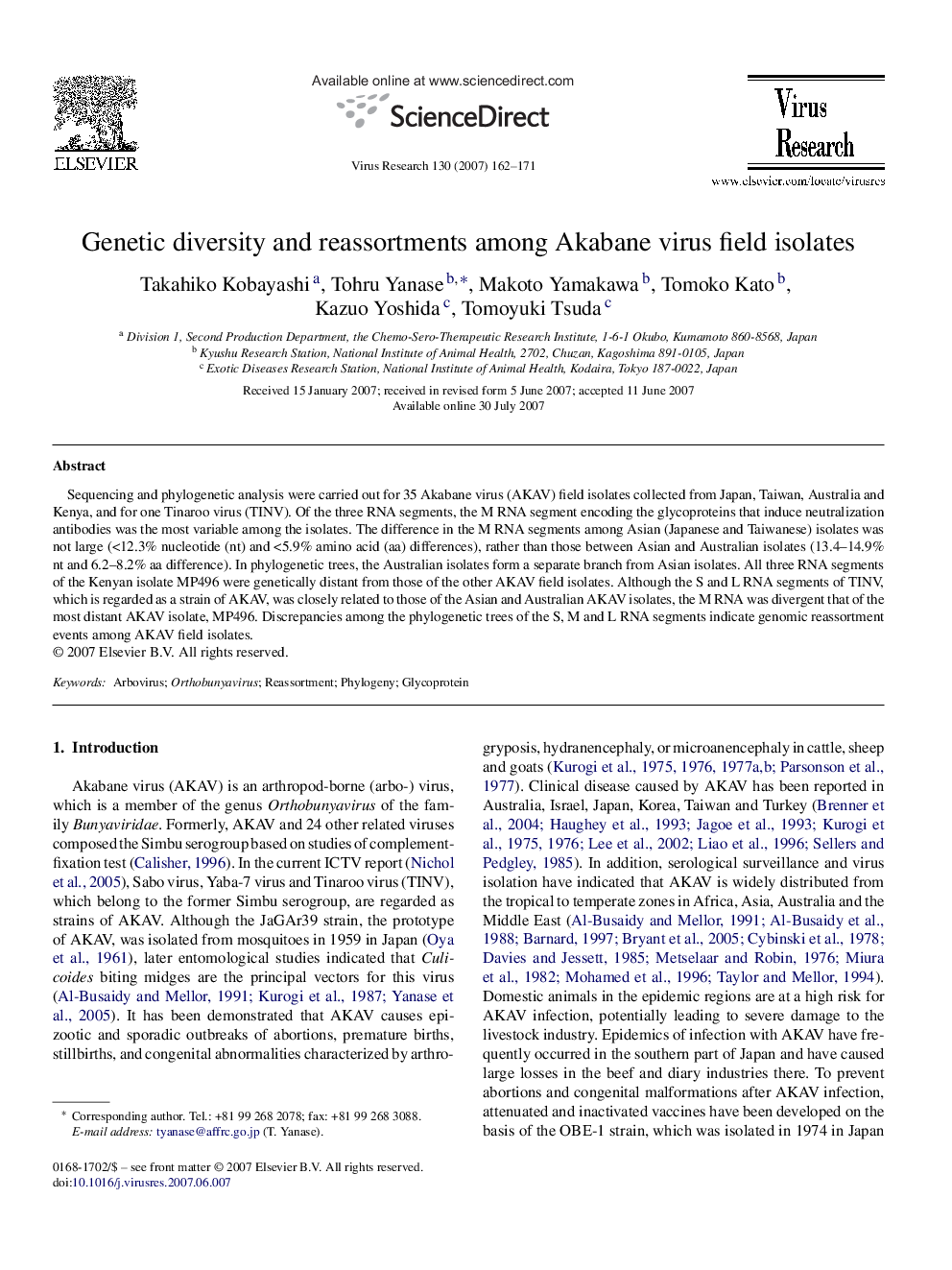| Article ID | Journal | Published Year | Pages | File Type |
|---|---|---|---|---|
| 3430662 | Virus Research | 2007 | 10 Pages |
Sequencing and phylogenetic analysis were carried out for 35 Akabane virus (AKAV) field isolates collected from Japan, Taiwan, Australia and Kenya, and for one Tinaroo virus (TINV). Of the three RNA segments, the M RNA segment encoding the glycoproteins that induce neutralization antibodies was the most variable among the isolates. The difference in the M RNA segments among Asian (Japanese and Taiwanese) isolates was not large (<12.3% nucleotide (nt) and <5.9% amino acid (aa) differences), rather than those between Asian and Australian isolates (13.4–14.9% nt and 6.2–8.2% aa difference). In phylogenetic trees, the Australian isolates form a separate branch from Asian isolates. All three RNA segments of the Kenyan isolate MP496 were genetically distant from those of the other AKAV field isolates. Although the S and L RNA segments of TINV, which is regarded as a strain of AKAV, was closely related to those of the Asian and Australian AKAV isolates, the M RNA was divergent that of the most distant AKAV isolate, MP496. Discrepancies among the phylogenetic trees of the S, M and L RNA segments indicate genomic reassortment events among AKAV field isolates.
